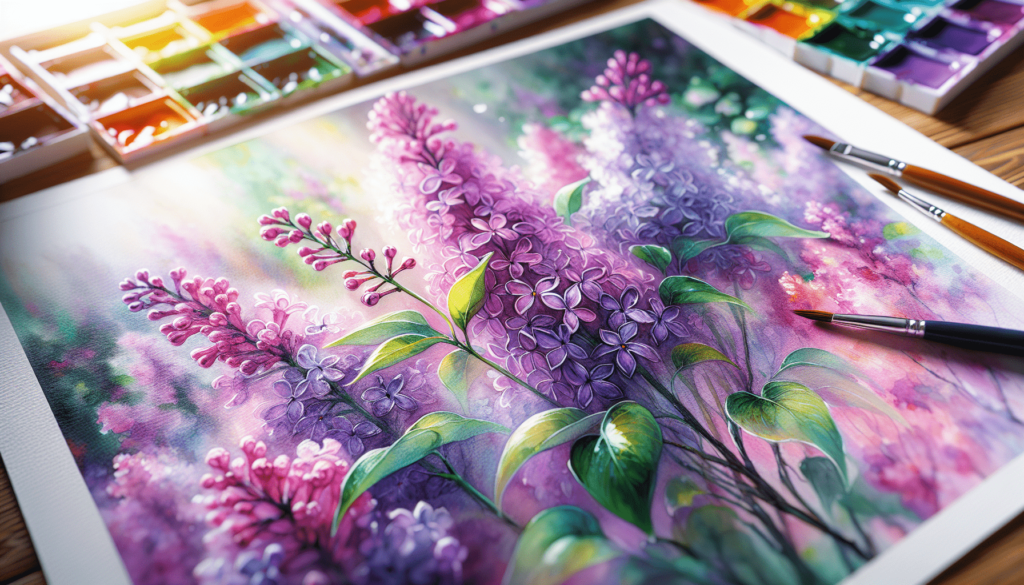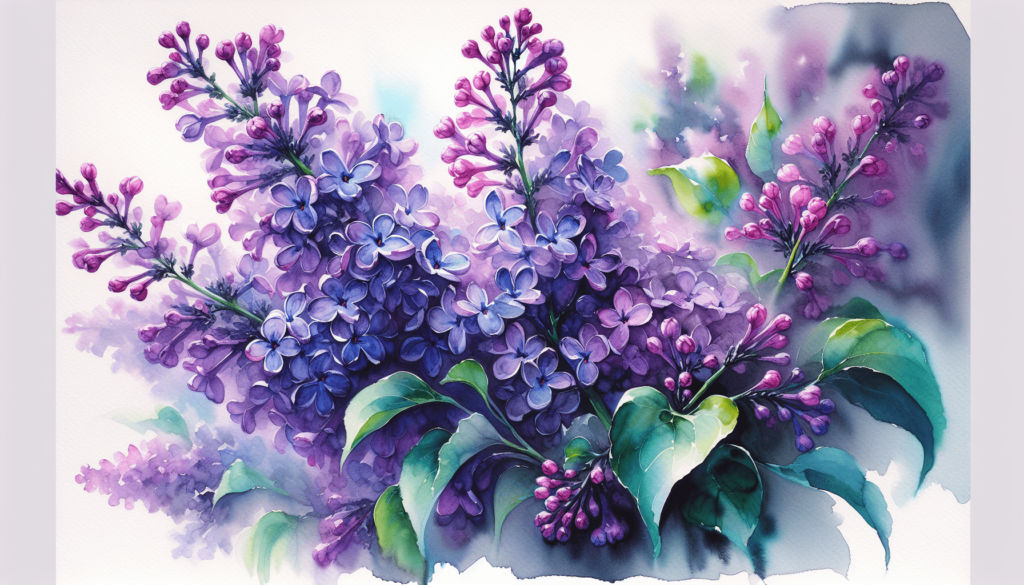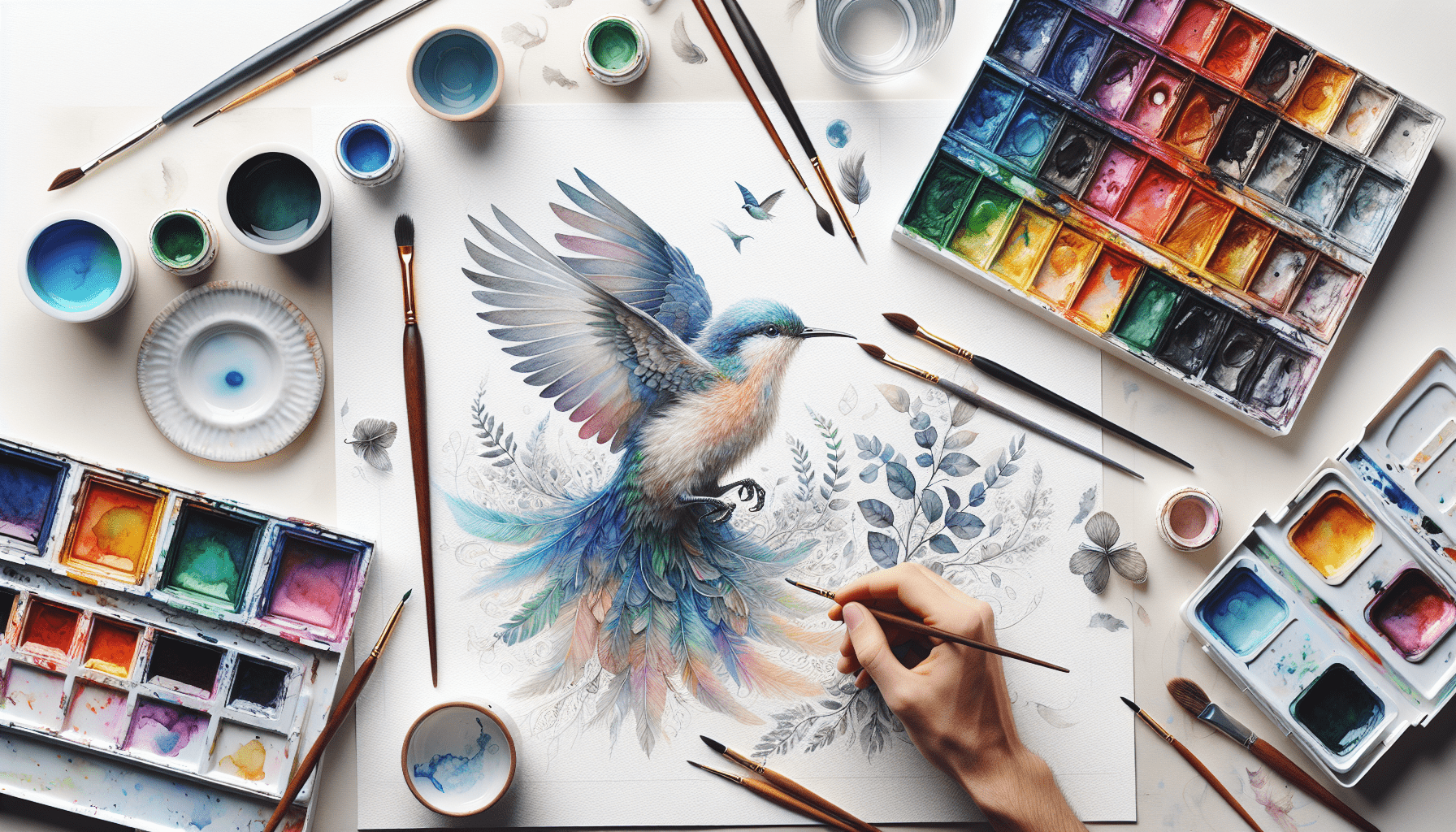In the article “How To Paint Lilacs In Watercolor,” you will discover a step-by-step guide designed to help you master the art of painting lilacs using watercolor techniques. This comprehensive guide will take you through the essential tools you need, preparation tips, and specific techniques for capturing the delicate beauty of lilac blossoms. By following these detailed instructions, you can refine your skills and develop the confidence to create stunning watercolor paintings that showcase the intricate elegance of lilacs. Have you ever admired the delicate beauty of lilacs and wished you could capture their essence in your watercolor paintings? Painting lilacs in watercolor can be an enriching and inspiring experience, letting you convey not only their visual appeal but also their fragrant elegance. In this comprehensive guide, you will learn various techniques and tips to help you create a stunning watercolor representation of lilacs.
Introduction to Watercolor Painting
Watercolor painting requires understanding unique mediums and methods that set it apart from other types of painting. The distinct quality of watercolor paints enables you to create luminous and translucent effects that are well-suited for portraying the gentle beauty of lilacs.
Understanding Watercolor
Watercolor paints are made of pigments suspended in a water-based solution. When you add water, these pigments spread and blend in ways that produce subtle gradients and natural-looking textures.
Essential Supplies
Before you start painting, it’s essential to gather all necessary supplies to ensure a smooth and enjoyable process. Here’s what you need:
| Item | Description |
|---|---|
| Watercolor paints | Choose artist-quality paints for better colors and effects |
| Brushes | A variety of shapes and sizes, including round and flat |
| Watercolor paper | At least 140lb (300gsm) to handle wet techniques |
| Palette | For mixing colors |
| Water container | Clean water for rinsing brushes and mixing paint |
| Paper towel | For blotting and correcting mistakes |
| Pencil & eraser | For sketching your lilac composition |
Preparing Your Workspace
A well-organized workspace will set the stage for a successful painting session. Ensure you have good lighting and ample space to arrange your materials. Keep everything within easy reach, so you can focus on your painting.

Sketching the Lilacs
Before you dive into painting, an initial sketch will guide your composition and help you plan where elements will be placed. Don’t worry about details at this stage; the sketch is merely a blueprint.
Observing Your Subject
Start by looking closely at lilac flowers to understand their structure. Notice the clusters of tiny flowers that form larger bunches. Pay attention to the shape of each flower and the arrangement of petals.
Creating the Outline
Lightly sketch the main structure of the lilac clusters using a pencil. Focus on getting the overall shape and positioning right. This outline will act as a guide for your paint application.
Choosing Your Color Palette
Selecting the right colors will make your painting come to life. Lilacs come in various shades of purple, pink, and white, so your palette should reflect these hues.
Basic Colors
For a realistic representation of lilacs, consider the following basic colors:
- Purples: Dioxazine Purple, Ultramarine Violet
- Pinks: Quinacridone Rose, Permanent Rose
- Greens: Sap Green, Hooker’s Green
- Yellows: Lemon Yellow, Cadmium Yellow Light
Mixing Colors
Watercolors can be easily mixed to create new hues. Experiment with blending different shades on your palette to match the natural colors of lilacs. Mixing colors not only helps you achieve the desired shades but also brings harmony to your painting.
Swatching Colors
Before you begin, swatch your colors on a piece of scrap watercolor paper. This practice will help you understand how the colors appear when dry and how they interact with each other.

Basic Watercolor Techniques
Understanding basic watercolor techniques is crucial for painting lilacs effectively. These methods will help you create different textures and effects that bring realism to your work.
Wet-on-Wet Technique
The wet-on-wet technique involves applying wet paint onto wet paper. This method creates soft, blurred edges and is ideal for painting the delicate petals of lilacs.
- Wet your paper with clean water where you plan to paint the flowers.
- Apply your chosen color onto the wet area and watch how it spreads.
Wet-on-Dry Technique
The wet-on-dry technique involves applying wet paint onto dry paper. This method is useful for adding details and sharper edges.
- Start with dry paper.
- Apply your paint with the desired amount of water for controlled, defined edges.
Lifting
Lifting paint involves removing some paint from the paper to create highlights or correct mistakes. Use a damp brush or a paper towel to blot away excess paint.
Glazing
Glazing is the process of applying a thin, transparent layer of paint over a dried area. This technique is useful for building depth and intensity in colors.
- Allow the initial layer of paint to dry completely.
- Apply a diluted wash of color over the dried area for added depth.
Painting the Lilacs
Now that you have a foundation in place, it’s time to start painting the lilacs. Begin with lighter colors and gradually build up to darker tones, maintaining the transparency characteristic of watercolors.
Painting the Flowers
Start by painting the lightest colors first. Use the wet-on-wet technique to create soft, diffused petals. Gradually layer different shades of purple and pink to add depth and dimension.
- First Layer: Apply a light purple wash to the petals using the wet-on-wet technique.
- Second Layer: Once the first layer is dry, add a darker purple using the wet-on-dry technique to define some of the petals.
- Details: Use a fine brush to add intricate details like petal veins and stamen with darker shades.
Painting the Leaves and Stems
Lilac leaves and stems are just as important as the flowers themselves. Use varied shades of green to convey depth and movement.
- Base Layer: Start with a light green wash for the leaves and stems.
- Layering: Add darker greens to create shadows and highlights. Use a combination of wet-on-wet and wet-on-dry techniques to build up texture.
Adding Texture
To make your painting more realistic, add texture to the flowers and leaves:
- Dry Brush Technique: Using a nearly dry brush with minimal paint, lightly drag it across the paper to create the illusion of texture.
- Lifting: Use a damp brush or paper towel to lift paint and create highlights.
Final Touches
Once the main elements of your painting are in place, take a step back and review your work.
Refining Details
Use a fine brush to add the final details, like tiny petals, leaf veins, and subtle color variations. These small touches can elevate your painting from good to great.
Corrections and Adjustments
If any part of your painting feels off, don’t hesitate to make corrections. Use lifting and glazing techniques to adjust colors and correct mistakes.
Conclusion
Painting lilacs in watercolor is a rewarding process that combines observation, technique, and creativity. By understanding your materials and practicing essential watercolor techniques, you can create a detailed and beautiful representation of lilacs. Each painting session is an opportunity to refine your skills and develop your unique artistic style.
Remember, the key to watercolor is patience and experimentation. Allow yourself the freedom to explore different methods and discover what works best for you. With time and practice, you’ll be able to capture the delicate beauty of lilacs in your watercolor paintings.



